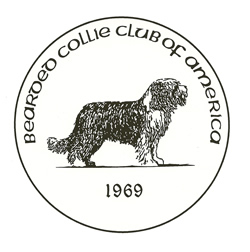Is there really such a creature as a blue merle Beardie? Well, yes. And no. The simple answer is that there are no registered blue merle Beardies. Registered is the key word here. It’s generally accepted that all registered Beardies in the world go back to just twelve dogs. Of course that dozen had parents and grandparents and so on. But they didn’t have pedigrees or registered lineage and there’s a good chance many of them shared the same simple, one-word name, just to add to the confusion. Wouldn’t it be nice to have a dollar for every dog named Misty or Max? So those twelve are considered the basis of all registered Beardies. And none of them were merle. That’s significant because one parent must be merle to produce merle pups.
An interesting point about the merle gene is that it’s semi-lethal, which means breeding two merles will unhappily result in about half of the litter being blind and/or deaf. Not a desirable outcome. It’s also a dominant gene, which results in it being evident and out there for everyone to see. It’s not hidden in the background like recessive genes, which go along unexpressed for generations and then pop up (surprise!) when they’re least expected. So, with none of the original dozen being merles, none of the thousands of registered offspring carry the merle gene.
There was some confusion about this back in 1983, when the third edition of the popular breed book, Beardie Basics by Barbara Rieseberg and B.J. McKinney was published. The back cover of the book featured a color photo of six Beardie pups of various colors. One was identified as being “blue merle.” It wasn’t. It was later identified as a blue with the tan markings found on tricolors on the cheeks, eyebrows, legs and the “sit me down” under the tail. Having never run across this pattern before, the breeder erroneously decided it must be a blue merle. Before long, the mistake was discovered. But too late, it was already in print.
When it comes to working Beardies, color was not a major consideration. As long as the dog could herd, run, and jump, shepherds were happy with them. So yes, there were and still are blue merle working Beardies. The spring 1987 issue of the Bearded Times, a British publication, carried an article on Blue Merle in Beardies authored by Major James G. Logan. In it, he noted the earliest descriptions of Beardies in an 1899 book, The Dogs of Scotland, and Our Dogs magazine, commented that the walleye (or china eye) was well-suited to the merle coat. In that same era, a 1911 painting by Sir George Pirie, titled The Shepherd’s Fire, portrayed a very definite blue merle dog.
In the article, Major Logan suggested that since the blue (or china) eye often accompanied merle coloration, there was a possibility (however remote) there were indeed registered blue merle Beardies whose merle markings were masked by either the graying gene or the dilution gene. Though Major Logan admitted it was “unlikely” the merle gene still exists in registered Beardies, he pointed out a number are born with blue (wall or china) eyes, which may be associated with the merle gene. To the best of my knowledge, that possibility has not been explored. However, Justine Waldron, editor of The Millennium Book 2000, published by the Southern Counties Bearded Collie Club of Great Britain, wrote, “I have recently heard of several instances where puppies have been born black but with a definite blue patch on one part of their bodies. In most cases, these pups have had a littermate with a wall or china eye – a feature often associated with the merle gene. When the blue patch puppies mature their oddity would disappear as the slate and blue coloring would merge. What would happen if dogs carrying this trait were mated?” Perhaps one of the best known walleyed Beardies was Ch. Osmart Bonnie Blue Ribbon. Though he sired several pups with one or both blue eyes, none of them were merles.
Some years ago, noted judge Anne Rogers Clark was talking with me about our breed. She remarked that our standard didn’t address the walleye which occasionally appeared. I recall suggesting the phrase that eyes should tone with coat would cover it. Was I right or wrong?
– alice bixler, Bearded Collie Club of America.




